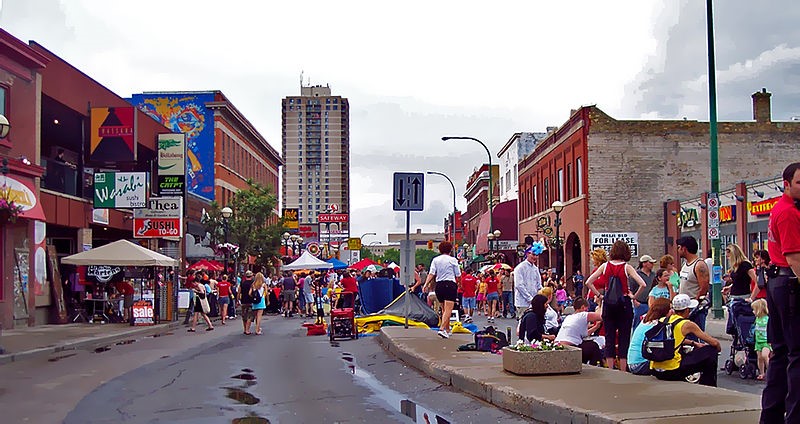InTrans / Oct 20, 2015
Creating active communities: The Open Streets movement
Go! Magazine
 posted on October 20, 2015
posted on October 20, 2015
This series is dedicated to “movements,” which are identified as people working together to advance a shared political, social, or artistic idea. In this series, we’ll discuss a few social movements focused on transportation alternatives.
In the previous article, “Creating active communities: The Complete Streets movement,” we talked about what a complete street is and what it could look like both in the city and in more rural places. In this article, we will take a look at a few open streets movements happening today across the county and how the movement first started “moving.” Have you ever been to a block party or festival on a “closed” street? This type of street is sectioned off and closed to automobile traffic, meaning that the street is temporary “open” for walking, bicycling, dancing, playing, socializing, and much more. This is what is known as an “Open Street.”
Where it all began
The first city to have an official Open Street was Bogotá, Colombia, in December 1974. “Ciclovía,” which is Spanish for “cycleway” or bike path, originally began as a way to make Bogotá safer for bicyclists. Today, nearly 75 roadway miles in Colombia, every Sunday and during any public holiday from 7 a.m. until 2 p.m., are closed and draw millions of bicyclists and walkers to the roads.

But the Bogotá Ciclovía is not just about getting more people in the community to be active. It’s also a cheaper alternative for transportation planners to engage the community. By having people of all ages, income levels, occupations, religions, races, etc. in public spaces, a space is created for understanding how people interact on the streets and what type of infrastructure may be needed.
Ciclovías have been adopted in cities around the world! The movement in the US, known as the Open Streets movement, has been extremely successful in building relationships between local governments and community members. To take a closer look, let’s explore two examples in North America.
Winnipeg, Manitoba (Canada)
Winnipeg is unique in that it hosts two Ciclovías each year, one of which is on ice! Their very first Ciclovía was held in 2009 and attracted nearly 10,000 people. By combining with other events and seeking private donations, both Winnipeg Ciclovías are always free to the Canadian public.

Every winter, Winnipeg hosts their “Ciclovía on ice,” which is held on the six mile Assiniboine Credit Union River Trail. Did you know that this is the longest frozen river trail in the world? This specific initiative features ice-skating, curling, hockey, cycling, and broomball.
In the summertime, Winnipeg hosts a community Ciclovía that features Zumba, yoga classes, a farmers’ market, and live music. Not only is this Ciclovía getting people active, but it’s also highlighting local businesses and improving economic development.
New York City, New York
It may seem crazy to think that New York, of all places, would be willing to shut down its’ streets. With a population of over eight million, New York City is the largest city in the US.
Beginning in 2008, New York began its Summer Streets program, which is an initiative that celebrates the streets as a place for all people. More than 250,000 people attend the Summer Streets initiative each year, making it the most attended Open Streets movement in North America.

In order to support such a large crowd, many area partners help sponsor the event, which is seven miles long! Activities are geared towards people of all ages and activity levels. Some of the activities in 2010 included rock climbing, roller-skating, and even swimming pools created out of sterilized dumpsters!
Related links
Video: http://www.streetfilms.org/the-rise-of-open-streets/
http://www.pps.org/blog/using-ciclovia-to-plan-your-streets/
http://nacto.org/docs/usdg/smaller_open_streets_guide_final_print_alliance_biking_walking.pdf
By Jackie Nester, Go! Staff Writer